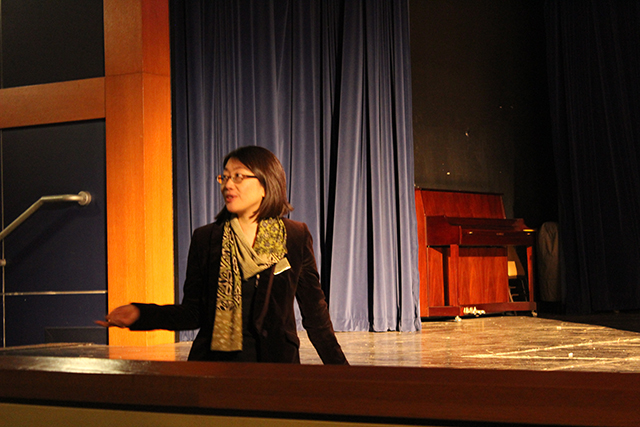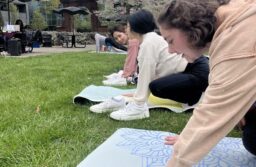
Photo by Catherine Armstrong
Last Thursday, the event “Fukushima Nuclear Disasters and Lessons for the U.S.” was held to commemorate the 4-year anniversary of the Fukushima Nuclear Disaster, which occurred on March 11, 2011.
Sponsored by Ramapo Green, the United Asian Association, the master’s program in Sustainability Studies and the Environmental Studies and International Studies programs, the discussion panel was led by speakers from the Ramapo College community. Kelly O’Dowd, a student majoring in international studies and minoring in anthropology, Professor Mike Edelstein of the environmental studies department and Program Assistant in the Roukema Center for International Education and Fukushima native Izumi Osawa-Minevich shared their own unique perspectives on the challenges associated with nuclear power.
Disaster struck when the combination of a 9.0 earthquake and a major tsunami, which was a result of the earthquake, caused hydrogen explosions and then the meltdown of three nuclear reactors at Fukushima I Nuclear Power Plant in the Fukushima prefecture of central Japan. The following day, huge amounts of radioactive materials were released from the plant and continue to be released today, though in lesser amounts. Radioactive materials spread from the shores of Japan to the shores of virtually all landmasses that share the Pacific Ocean, including the west coast of the United States.
The disaster continued as the government manipulated the Japanese media, minimizing the health risks that are caused by nuclear exposure, like cancer. This led the people of Japan to believe that the situation was far less dangerous than was the reality. The people in the surrounding area were told to move 20 km away from the reactor site, while independent organizations revealed that dangerous radiation was still prevalent at 40 km from the nuclear site, where Osawa-Minevich’s family lived. She shared her family’s experience of uncertainty in whom to trust and what to believe regarding the decision to move outside the 40 km radius.
O’Dowd discussed one instance where a top official, who was affiliated with Tokyo Electric Power Company, called the incident an “unforeseen disaster,” a clear conflict of interest, which was far from the from being true, as was discussed during the event. Had those involved in the conception of Fukushima Nuclear Plant chosen to open their eyes to the devastation caused by other nuclear disasters such as Chernobyl and Indian Point, which Edelstein shed light upon during the discussion, they may have made different choices regarding the construction of the plant on top of an active fault line. Now, it is the people of Fukushima, like Osawa-Minevich and her family, that are paying the highest price for the lack of foresight.
“We have the capacity to learn from our mistakes and grow out of this experience with a new perspective. But in order to do that we have to think critically about our past mistakes globally and move towards a global perspective of environmental stewardship,” said O’Dowd during her presentation.
The Fukushima Disaster is still occurring now, even though some improvements have been made. The disaster is not a singular event, but connected to the other nuclear disasters in the past. It is important that when something this catastrophic occurs, it is remembered, or else it is likely to occur again.
“This presentation helped to illustrate the potential social, ecological and economic ramifications associated with generating nuclear power,” said senior Donovan Falls, who attended the event. “As an environmental studies major, it is with my interest to investigate the Fukushima Nuclear Disaster in order to develop ideas for more clean, sustainable and safe alternatives for meeting our future energy demands.”
iarriech@ramapo.edu





